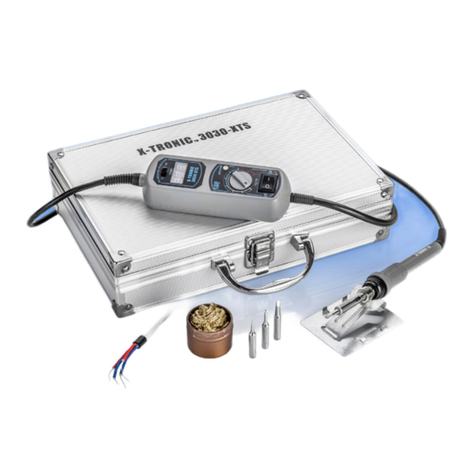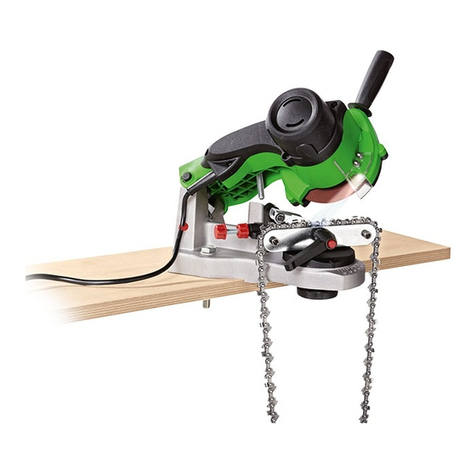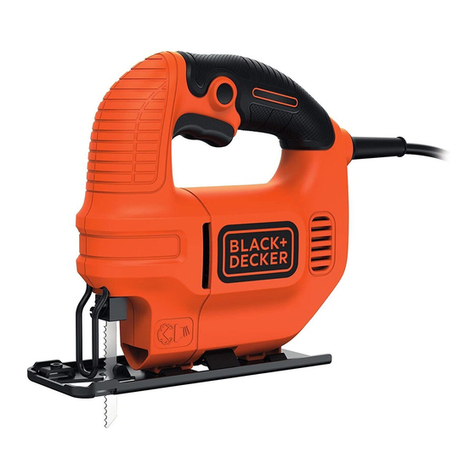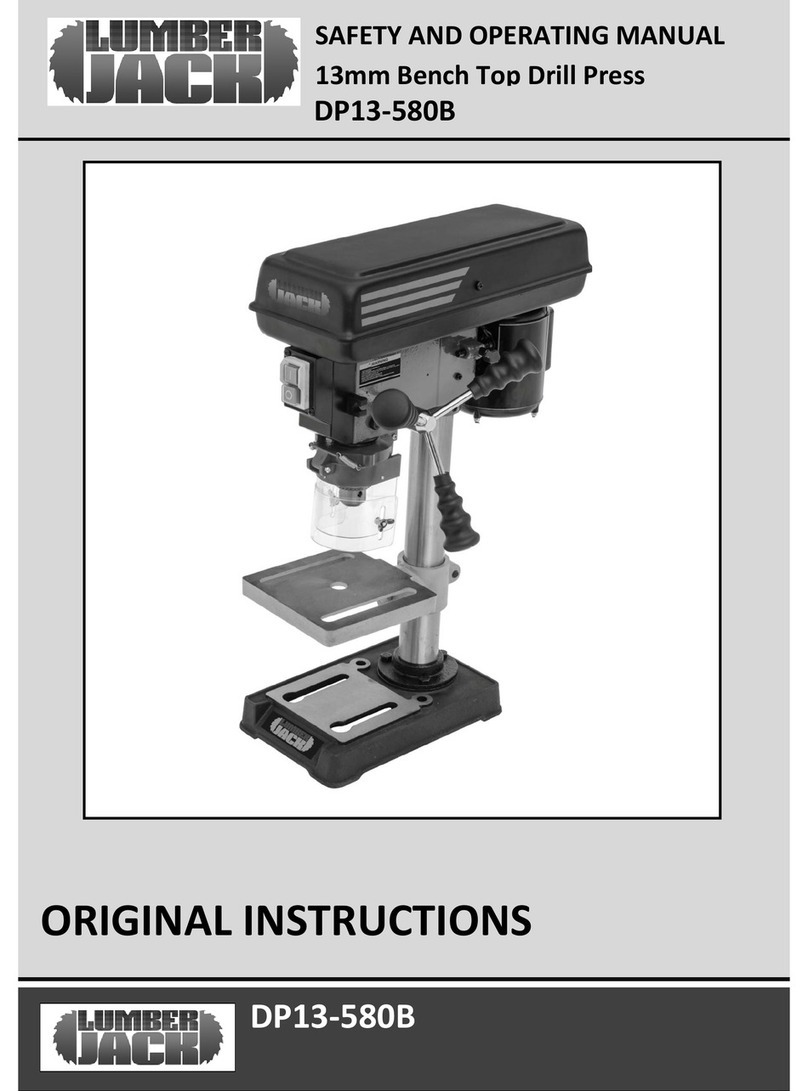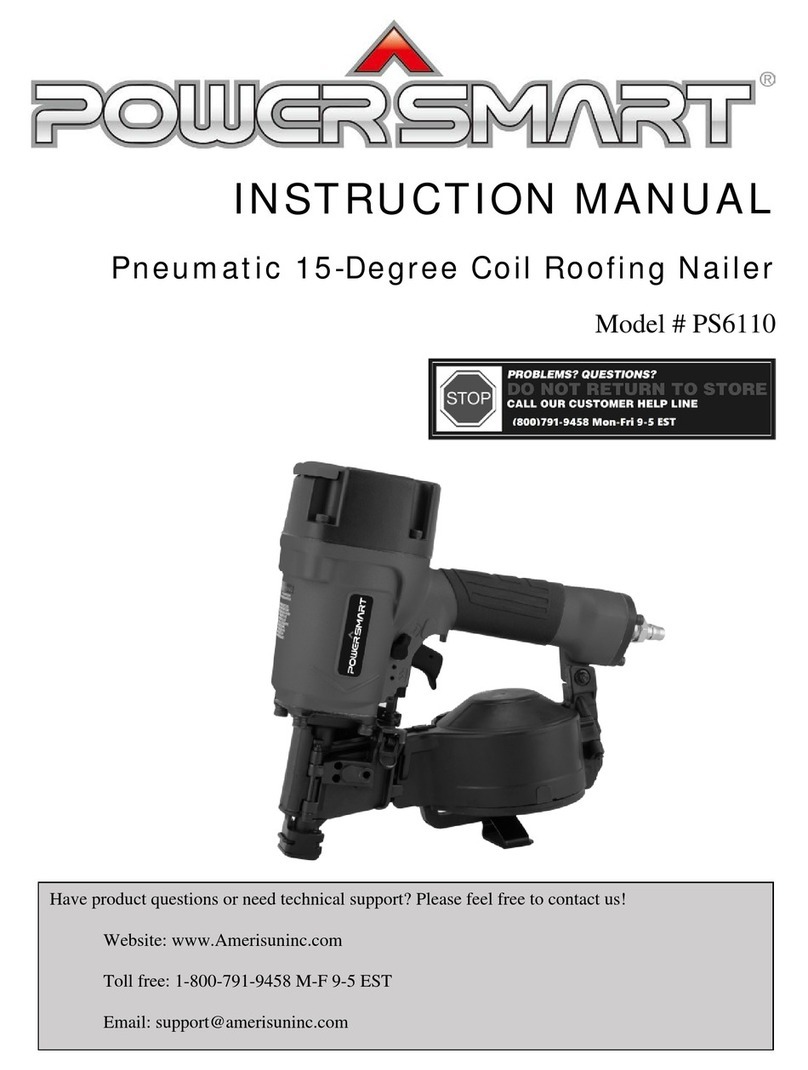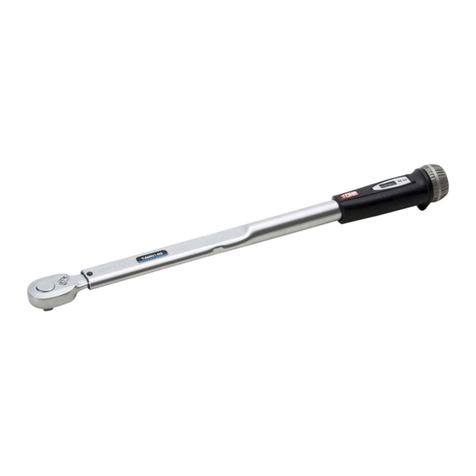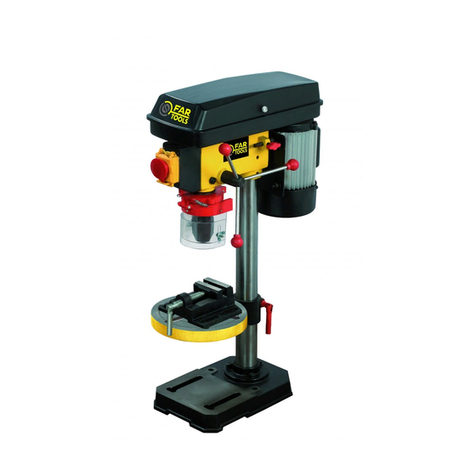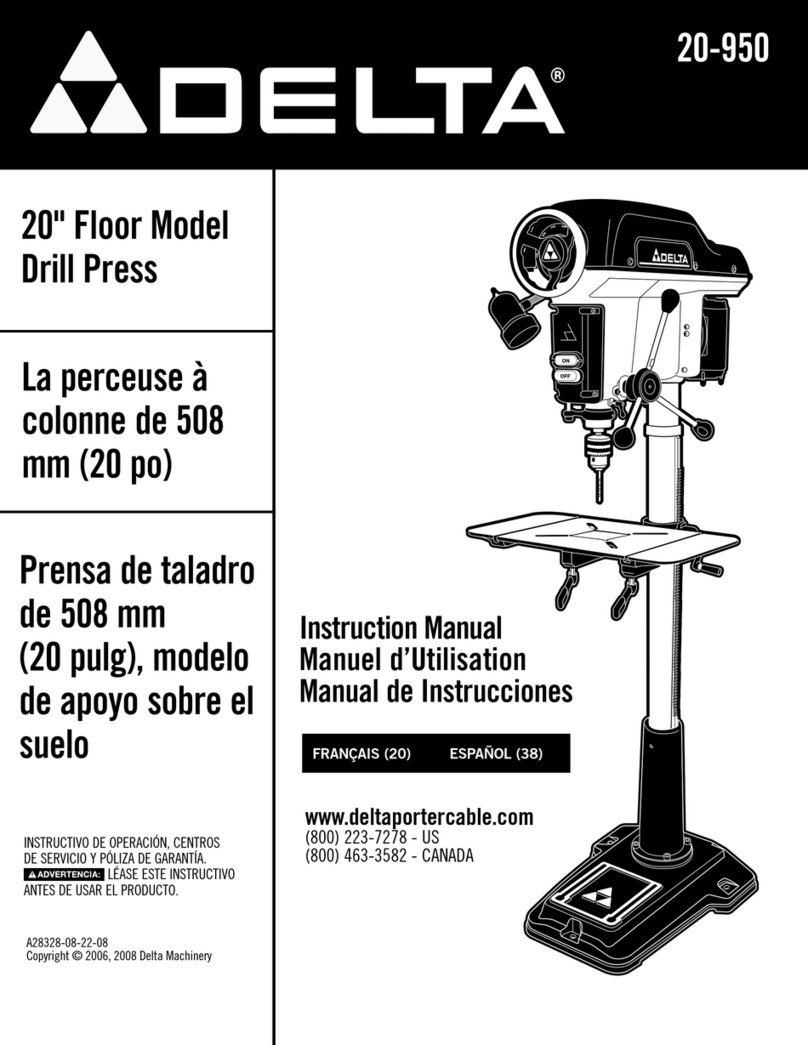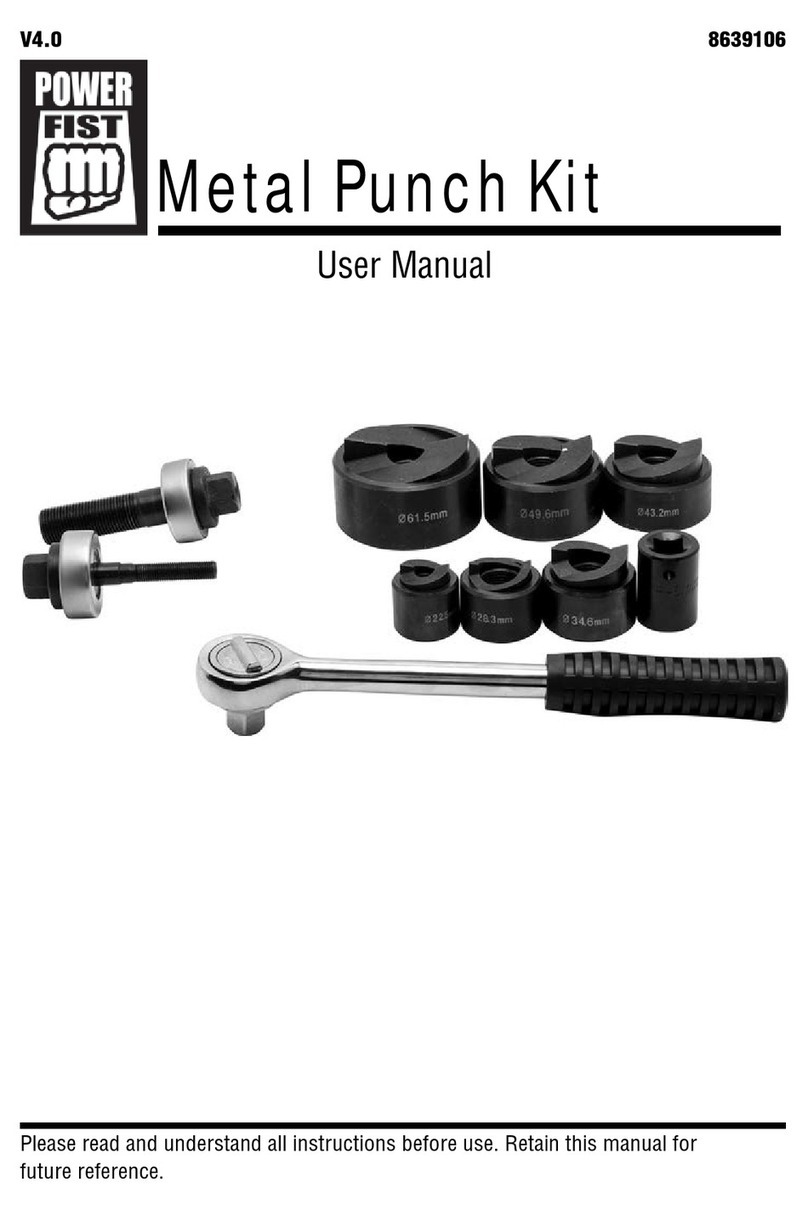DEHACO IBEX Series User manual

IBEX
Hydraulic breakers - G-type
Operation and
maintenance manual
English
IBEX • Versie 17-08-2018


3
© 2018 Dehaco B.V. • Operation and maintenance manual IBEX Hydraulic breakers G-type – Version 17-08-2018
Preface
© Copyright 2018, Dehaco B.V.
All rights reserved. No part of this publication may be reproduced or transmitted in any form, or published in any form or means, electronic,
mechanical, photocopying, recording or otherwise, without the prior written permission of Dehaco BV. This also applies, if necessary,
accompanying drawings and diagrams. Dehaco BV reserves the right to change parts at any time without prior or immediate notice to the
customer. The contents of this manual can also be changed without prior notice. For information concerning establishment, maintenance and
repair this user manual does not provide, please contact the technical department of your supplier.. This user manual has been made with all
possible care, but Dehaco BV can not accept responsibility for any errors in this manual or the consequences thereof.
PREFACE
General
Congratulations with the your purchase of the IBEX hydraulic breaker. By opting for the IBEX breaker you have
chosen for years of experience in development, sales, aftersales and servicing of hydraulic breakers.
The IBEX breakers are suitable for breaking large boulders in quarries, tunnels, creating trenches for pipe
construction, demolition of concrete structures, removing slag from blast furnaces and breaking asphalt.
As standard the IBEX breakers are available with an open or silenced housing. In addition they are prepared for a
central greasing system and an air connection for underwater demolition.
Markings on the machine
The main specications are listed on the identication plate on the side of the housing. This plate also includes the
address of the manufacturer. Removal of this plate or switching it to another machine is strictly forbidden. If the
identication plate is damaged or removed the user should inform Dehaco or an approved Dehaco dealer so a new
plate can be produced. An additional identication plate is located on the backhead of the breaker, on which the
serial number and year of manufacture is indicated.
Dehaco B.V.
Kruisbaak 25
2165 AJ Lisserbroek (NL)
T +31 (0) 252 41 79 50
F +31 (0) 252 41 85 31
I www.dehaco.nl
Dealer

4Dehaco B.V. • Kruisbaak 25 • 2165 AJ Lisserbroek (NL) • ✆+31 (0)252 - 41 79 50 • [email protected] • www.dehaco.nl
EC Declaration of Conformity
EG DECLARATION OF CONFORMITY
IBEX 130, 135, 170, 200, 320, 600, 900, 1200, 2200, 2800, 3200
(EC Machinery Directive 2006/42/EC)
We, Dehaco B.V., herewith declare that the following products comply to the essential requirements of the above
mentioned European Directive and the following harmonized standards:
Product: Hydraulic breakers
Type designation: IBEX 130GS, IBEX 170GS, IBEX 200GS, IBEX 320GS, IBEX 600GS, IBEX 900GS,
IBEX 1200GS, IBEX 2200GS, IBEX 2800GS, IBEX 3200GS
Manufacturer: Dehaco B.V.
Kruisbaak 25, 2165 AJ Lisserbroek (The Netherlands)
General manager: Jeroen Korporaal
Standard(s): EN ISO 12100-2:2003
EN 982:1996+A1:2008
Place and date: Lisserbroek, 04-07-2013
EG Declaration of Conformity IBEX 400GS, 1800GS, 4000GS
(EC Machinery Directive 2006/42/EC)
We, Dehaco B.V., herewith declare that the following products comply to the essential requirements of the above
mentioned European Directive and the following harmonized standards:
Product: Hydraulic breakers
Type designation: IBEX 400GS, IBEX 1800GS, IBEX 4000GS
Manufacturer: Dehaco B.V.
Kruisbaak 25, 2165 AJ Lisserbroek (The Netherlands)
General manager: Jeroen Korporaal
Standard(s): ISO 12100:2010
ISO 4413:2010
Place and date: Lisserbroek, 04-07-2013

5
© 2018 Dehaco B.V. • Operation and maintenance manual IBEX Hydraulic breakers G-type – Version 17-08-2018
Index
INDEX
PREFACE 3
EG Declaration of Conformity 4
1. Safety instructions 6
1.1 Signal words 6
1.2 Qualication 6
1.3 Intended use 6
1.4 Protective equipment 7
1.5 Operation, precautions 7
1.6 Hydraulic installation, precautions 7
1.7 Media/consumables, precautions 7
1.8 Explosion and re, precautions 8
1.9 Elektric shock, precautions 8
1.10 Falling stones, precautions 8
1.11 Emissions, precautions 8
1.12 Handling machines, precautions 8
1.13 Modications to the IBEX breaker, precautions 9
1.14 Environmental pollution, precautions 9
1.15 Guarantee terms and conditions 9
2. Overview 10
2.1 Description of the IBEX breaker 10
2.2 Name plate 11
2.3 Applications 12
2.4 Removing the packaging 12
2.5 Scope of delivery 12
2.6 Accessories - standard and as ordered 12
3. Transport 13
3.1 Transport using an excavator or crane 13
3.2 Transport using a forklift 13
3.3 Transport using a van or truck 13
4. Installation 14
4.1 Tool 14
4.2 Mounting the breaker on the excavator 14
4.3 Setting the breaker 15
5. Working Methods 16
5.1 Correct working Methods 16
5.2 Operating Temperature 17
5.3 Other important points 17
6. Maintenance 18
6.1 Manual lubrication 18
6.2 Inspection and maintenance schedule 18
6.3 Hydraulic oil 19
6.4 Nitrogen gas in the backhead 21
6.5 Accumulator 22
6.6 Regulating oil ow rates of valve adjuster 23
6.7 Wear parts 23
6.8 Wear limits for parts 24
6.9 Torques IBEX 130GS t/m 900GS 27
6.10 Torques IBEX 1200GS t/m 4000GS 28
7. Storage 29
7.1 Dismounting the breaker 29
8. Trouble shooting guide 30
8.1 Oil leakage 30
8.2 No impact energy 30
8.3 Irregular blows after normal start 30
9. Options list 31
10. Toolbox content 32
11. Technical specications 33
Appendix-1 Underwater operation 34
Appendix-2 Anti-blank ring 36

6Dehaco B.V. • Kruisbaak 25 • 2165 AJ Lisserbroek (NL) • ✆+31 (0)252 - 41 79 50 • [email protected] • www.dehaco.nl
1. Safety instructions
1. SAFETY INSTRUCTIONS
Read these Safety and operating instructions and
specically all safety instructions before using the
IBEX breaker. This will:
◊ prevent the risk of injuries and fatal accidents for
yourself and others,
◊ protect the IBEX breaker and other property
against material damage,protect the environment
against environmental damage.
Follow all instructions in this operation and
maintenance manual. Store this manual in de
document compartment of the carrier cab.
Anyone responsible for transporting, installing or
removing, operating, maintaining, repairing, storing
or disposing of the IBEX breaker must have read and
understood these Safety and operating instructions.
This operation and maintenance manual belongs to
the IBEX breaker. Keep it for the life of the product.
Ensure, if applicable, that any received amendment is
incorporated in the instructions. Hand over the Safety
and operating instructions if ever you lend, rent out or
sell the IBEX breaker.
All safety regulations listed in this manual comply
with the laws and regulations of the European
Union. Also observe the additional national/regional
regulations.
IBEX breaker operations outside the European Union
are subject to the laws and regulations valid in the
country of use. Please observe any other, more
stringent regional regulations and legislation.
Read the carrier manufacturer’s Safety and operating
Instructions before attaching the IBEX breaker to the
carrier and operating it. Observe all instructions.
1.1 Signal words
The signal words danger, warning, caution, and notice
are used as follows in this operation and maintenance
manual:
DANGER!
indicates a hazardous situation which, if not avoided,
will result in death or serious injury.
WARNING!
Indicates a hazardous situation which, if not avoided,
could result in death or serious injury.
CAUTION!
Indicates a hazardous situation which, if not avoided,
could result in minor or moderate injury.
NOTE
The signal word NOTICE is used to address
practices related to possible property damage but
not related to personal injury.
1.2 Qualication
Transporting the IBEX breaker is only permitted if
carried out by people who:
◊ are authorised to operate a forklift truck
according to the applicable national provisions,
◊ know all the relevant national/regional safety
provisions and accident prevention rules,
◊ have read and understood the safety and
transport chapter of this operation and
maintenance manual.
Installing, maintaining, storing and disposing of
the IBEX breaker is only permitted if carried out by
people who:
◊ know all the relevant national/regional safety
provisions and accident prevention rules,
◊ have read and understood these Safety and
operating instructions.
◊ Operating the IBEX breaker is only permitted if
carried out by qualied operators. Operators are
qualied if they:
◊ have been trained to operate a carrier according
to the national regulations,
◊ know all the relevant national/regional safety
provisions and accident prevention rules,
◊ have read and understood these Safety and
operating instructions.
Testing the hydraulic installation is only permitted
if carried out by professionals.
Repairing the IBEX breaker is only permitted if
carried out by professionals trained by Dehaco.
1.3 Intended use
Only attach the IBEX breaker to a hydraulic carrier
of a suitable load−bearing capacity. Read the carrier
manufacturer’s instructions before attaching the
IBEX breaker to the carrier and operating it. Observe
all instructions.

7
© 2018 Dehaco B.V. • Operation and maintenance manual IBEX Hydraulic breakers G-type – Version 17-08-2018
1. Safety instructions
1.4 Protective equipment
Personal protective equipment must comply with
the applicable health and safety regulations.
Always wear the following personal protective
equipment:
◊ Protective helmet
◊ Safety glasses with side protectors
◊ Protective gloves
◊ Protective shoes
◊ Warning vest
1.5 Operation, precautions
WARNING!
If the load-bearing capacity of the carrier used is
insufcient, the carrier will not be stable. It can
topple over and cause injuries and damage.
Using a carrier whose load-bearing capacity is too
high will greatly burden the IBEX breaker causing
it to wear faster.
ØOnly attach the IBEX breaker to a hydraulic
carrier of a suitable load-bearing capacity.
ØThe carrier must remain stable at all times.
ØRead the carrier manufacturer’s Instructions
before attaching the IBEX breaker to the carrier
and operating it. Observe all instructions.
1.6 Hydraulic installation, precautions
WARNING!
If the hydraulic pressure is too high, the parts of
the IBEX breaker will be exposed to excessively
high loads. Parts can break loose or burst causing
serious injuries.
ØConnect the drain line of the pressure relief
valve directly in the tank to ensure the safe
functioning of the pressure relief valve!
ØThe pressure relief valve must be set at the
maximum static pressure.
ØThe pressure relief valve setting must be
checked to ensure that the maximum static
pressure (see chapter Technical specications) of
the hydraulic installation is not exceeded at any
time. Attach a lead seal to the pressure relief
valve.
ØPrior to their rst use, the safety facilities on
the hydraulic installation must be checked by
a professional/authorised monitoring body
for their quality (CE mark etc.), suitability and
proper functioning.
ØIf any signicant changes are made to the
hydraulic installation, a new acceptance
inspection is to be carried out in accordance with
the relevant national safety provisions.
WARNING!
The hydraulic system is under high pressure.
Hydraulic lines may spring a leak or burst.
Hydraulic oil under pressure can lead to serious
injury.
ØWhen attaching the IBEX breaker do not lay any
hydraulic lines through the carrier’s cab.
ØOnly use hydraulic lines which comply with the
highest quality requirements.
1.7 Media/consumables, precautions
WARNING!
Hydraulic oil will spray out under high pressure if
there is a leakage. The jet of oil might penetrate
people’s skin and cause permanent damage. Hot
hydraulic oil can cause burns.
ØNever use your hands to nd leaks.
ØAlways keep your face away from a possible
leak.
ØIf hydraulic oil has penetrated your skin consult
a doctor immediately.
WARNING!
Spilt hydraulic oil can make a oor slippery. If
people slip they can be injured. Hydraulic oil is
environmentally harmful and must not penetrate
the ground or enter the water table or water
supplies.
ØMake sure not to spill any hydraulic oil.
ØImmediately clean the oor if you have spilt
hydraulic oil.
ØObserve all safety and environmental protection
provisions when handling hydraulic oil.
WARNING!
Hydraulic oil and grease can cause rashes (or even
eczema) if they come into contact with the skin.
ØAvoid all skin contact with hydraulic oil and
grease.
ØUse a suitable skin protection product.
ØAlways wear safety gloves when working with
hydraulic oil or grease.
ØImmediately clean any skin that has been
contaminated by oil or grease with water and
soap.

8Dehaco B.V. • Kruisbaak 25 • 2165 AJ Lisserbroek (NL) • ✆+31 (0)252 - 41 79 50 • [email protected] • www.dehaco.nl
1. Safety instructions
1.8 Explosion and re, precautions
DANGER!
Explosions cause serious injury or death. Explosives
being cut by the IBEX breaker may lead to an
explosion.
ØNever operate the IBEX breaker in the direct
vicinity of explosives.
ØMake sure that no explosives are hidden in the
concrete.
ØCheck gas line position plans of the complete
construction area.
DANGER!
Operating the IBEX breaker may create sparks which
ignite highly ammable gases. This may lead to re
or an explosion.
ØNever work in an environment with highly
ammable substances.
ØMake sure that there are no hidden sources of gas
in the work area.
ØCheck gas line position plans of the complete
construction area.
DANGER!
Dust-rich air can form an explosive atmosphere
which may ignite when operating the IBEX breaker.
his may lead to re or an explosion.
ØNever operate the IBEX breaker in an explosion-
hazard atmosphere.
ØAlways provide sufcient ventilation when working
in buildings or in a conned area.
1.9 Elektric shock, precautions
DANGER!
Any contact of the IBEX breaker with electric circuits
or other sources of electricity will lead to an electric
shock, resulting in serious injury or death. The IBEX
breaker is not electrically insulated.
ØNever work in the vicinity of electric circuits or
other sources of electricity.
ØMake sure that there are no hidden circuits in the
work area.
ØCheck wiring diagrams.
1.10 Falling stones, precautions
WARNING!
Fragments of material which come loose while
operating the IBEX breaker may become airborne
and can cause serious injury if people are hit by
them. Small objects falling from a great height or at
a high velocity can also cause serious damage.
During IBEX breaker operation the danger zone is
considerably greater than during the excavation
operation due to fragments of stone and pieces of
steel ying around, and for this reason the danger
zone must, depending on the type of material to
be worked on, be enlarged correspondingly, or
secured in a suitable manner through corresponding
measures.
ØSecure the danger zone.
ØStop the IBEX breaker immediately if anyone
enters the danger zone.
ØClose the windscreen and the side windows of the
driver’s cab.
1.11 Emissions, precautions
WARNING!
Dust may be generated when operating the IBEX
breaker. If dust from rocks or silica dust, produced
when operating the IBEX breaker on rocks, concrete,
asphalt or other such materials, is inhaled this may
lead to silicosis (dust lungs, a severe lung disease).
Silicosis is a chronic disease which may lead cancer
and death.
ØWear a suitable breathing mask.
1.12 Handling machines, precautions
WARNING!
Narcotics, alcohol and medicinal drugs make their
users less alert and affect their ability to concentrate.
Negligence and incorrectly assessing a situation can
result in serious injury or death.
ØNever work on or with the IBEX breaker when
under the inuence of narcotics, alcohol or drugs
which affect your alertness.
ØNever allow other people who are under the
inuence of narcotics, alcohol or drugs which affect
their alertness to work on or with the IBEX breaker.

9
© 2018 Dehaco B.V. • Operation and maintenance manual IBEX Hydraulic breakers G-type – Version 17-08-2018
1. Safety instructions
1.13 Modications to the IBEX breaker,
precautions
WARNING!
Changes to the IBEX breaker or the adapter plate
may lead to serious injury.
ØNever carry out any changes to the hydraulic
Øattachment or the adapter plate.
ØOnly use original parts or accessories approved by
Dehaco.
ØModications that entail new hazards may require
a new procedure for assessing conformity.
ØChanges to the hydraulic attachment.
1.14 Environmental pollution,
precautions
NOTE
Hydraulic oil is permanently environmentally
harmful. Escaped hydraulic oil will lead to
groundwater and soil contamination. Organisms may
die.
ØCollect any hydraulic oil which escapes to avoid
environmental pollution. For minor volumes use
an absorbing medium (in case of an emergency
use soil). In case of major leakages contain the
hydraulic oil. It must not drain off and penetrate
the ground or enter the water table or water
supplies.
ØCollect contaminated absorbing medium or soil in a
watertight box/container and close it tight.
ØContact an authorized waste management
company.
ØDispose of all contaminated material in accordance
with the applicable environmental regulations.
1.15 Guarantee terms and conditions
New IBEX breakers supplied by Dehaco B.V. have a
guarantee period of 12 calendar months.
The IBEX breakers are guaranteed against material or
production faults for the duration of the guarantee
period (Manufacturers Guarantee), subject to the
following terms and conditions.
The IBEX breaker must be installed and commissioned
by Dehaco BV or an approved dealer. The guarantee
period will commence from the date that the IBEX
breaker was dispatched.
The faulty components that fall under the guarantee
become the property of Dehaco B.V. These must be
kept available for Dehaco BV and should be returned
immediately, complete and unmodied.
A guarantee claim will only be considered when a
written claim has been registered with Dehaco BV
or an approved dealer. The damage or malfunction
should be registered within 24 hours of the rst
occurrence.
All claims must contain the following information:
◊ The serial number.
◊ The type of carrier that the machine has been
mounted on.
◊ A description of the damage or malfunction.
◊ Photos of the damage (where applicable), carrier
and situation.
◊ A copy of the delivery receipt and invoice of the
IBEX breaker.
After the fault has been determined Dehaco BV, or
the approved dealer can give the owner permission to
perform certain repairs. If these repairs fall under the
conditions of the guarantee the required components
will be delivered free of charge. If permission is
not given to perform the repair yourself then the
IBEX breaker should be returned to Dehaco BV or
an approved dealer for repair or modications. The
repairs that will be undertaken will be performed free
of charge. Whereas the transport and/or call-out costs
to and from Dehaco BV or an approved dealer are not
covered.
Dehaco B.V. is not liable for the consequential damage
or losses caused by a defective IBEX breaker. This
includes consequential excavator/carrier damage,
consequential damage or losses due to stoppage of
the excavator/ carrier or work).
Excluded from the guarantee
◊ Damage caused by improper installation or
commissioning of the IBEX breaker, excavator/
carrier or the hydraulic system.
◊ Damage caused by improper or neglected
maintenance and transport damage.
◊ Damage or failures that can be traced to faulty
repairs/maintenance and/or performed by
unauthorized third parties.
◊ Damage that can be traced to the incorrect
execution of preventative maintenance such as
regular lubrication.
◊ Damage or failure to components that are subject
to wear such as chisels and bushes.
◊ Consequential damage caused by the failure to
replace these wearing parts when required.
If damaged or failed components are replaced with
non-original parts the entire guarantee expires.

10
2. Overview
2. OVERVIEW
2.1 Description of the IBEX breaker
IBEX 130, IBEX 135, IBEX 170, IBEX 200, IBEX 320 ,
IBEX 400, IBEX 600 en IBEX 900
A) Tool
B) Front head
C) Piston
D) Cylinder
E) Back head
F) Valve
IBEX 1200GS, IBEX 1800GS, IBEX 2200GS, IBEX
2800GS, IBEX 3200GS & IBEX 4000GS
A) Tool
B) Front head
C) Piston
D) Cylinder
E) Valve
F) Back head
G) Valve block
H) Accumulator
A
B
C
D
F
Dehaco B.V. • Kruisbaak 25 • 2165 AJ Lisserbroek (NL) • ✆+31 (0)252 - 41 79 50 • [email protected] • www.dehaco.nl
E
G
H
A
B
C
D
E
F

11
© 2018 Dehaco B.V. • Operation and maintenance manual IBEX Hydraulic breakers G-type – Version 17-08-2018
2. Overview
2.2 Name plate
WARNING!
The name plate contains important information
about the IBEX breaker. A missing name plate can
lead to misinterpretation of possible risks and cause
personal hazards. The name plate must always be
clearly legible.
ØImmediately replace a defective name plate.
ØUse the spare parts list to order a new name plate.
Dehaco B.V.
Kruisbaak 25
2165 AJ Lisserbroek (NL)
www.dehaco.nl
TYPE
MODEL
MODÈLE
MODELL
YEAR
KG
BAR
L/MIN
SERIENUMMER
SERIAL NUMBER
NUMÉRO DE SÉRIE
SERIENNUMMER
BOUWJAAR
MANUFACTURE DATE
ANNÉE DE FABRICATION
HERSTELLUNGSDATUM
GEWICHT
WEIGHT
POIDS
GEWICHT
MAX. WERKDRUK
MAX. OPERATING PRESSURE
PRESSION MAXIMALE
MAXIMALER BETRIEBSDRUCK
MAX. OLIESTROOM
MAX. OIL FLOW
DÉBIT D’HUILE MAXIMALE
MAXIMALER ÖLFLUSS

12 Dehaco B.V. • Kruisbaak 25 • 2165 AJ Lisserbroek (NL) • ✆+31 (0)252 - 41 79 50 • [email protected] • www.dehaco.nl
2. Overview
2.3 Applications
The hydraulic breaker can be used for:
◊ demolition applications
◊ breaking applications
◊ trenching
◊ foundation work
2.4 Removing the packaging
1) Remove all the packaging material.
2) Dispose of it in accordance with the applicable
provisions.
3) Check that the delivery is complete.
4) Check the delivery for visual damage.
5) If any defects are found, contact Dehaco or an
authorized dealer as soon as possible.
2.5 Scope of delivery
The IBEX breaker is delivered complete with:
◊ IBEX breaker
◊ Operation and maintenance manual
◊ Spare parts list
◊ EC Declaration of Conformity
◊ Accessories (§2.6)
2.6 Accessories - standard and as
ordered
Every IBEX breaker has a standard set of accessories.
These are supplied alongside the breaker at delivery.
These accessories ensure that the breaker can be
prepared for use directly after delivery.
The standard accessories consist of:
◊ Hydraulic hoses – specic to model type
◊ Tool box – contents specic to model type (listed
below)
◊ Gas charging kit
◊ Nut and bolt set for mounting adaptor plate
◊ 1 Grease cartridge
◊ Dust cap
Dependant on the delivery type it is possible that
certain accessories are mounted on the breaker and
are not delivered separately.
The contents of the tool box are specic to the model
of IBEX breaker, these are listed in the table below:

13
© 2018 Dehaco B.V. • Operation and maintenance manual IBEX Hydraulic breakers G-type – Version 17-08-2018
3. Transport
3. TRANSPORT
WARNING!
The IBEX breaker is heavy. A falling or tipping forklift
and/or breaker can cause injury or damage to
people or the surrounding area.
ØTransport the IBEX breaker using only machinery
and accessories with the correct loading capacity.
ØEnsure that nobody is within the working area or
route when transporting the IBEX breaker.
3.1 Transport using an excavator or
crane
The lifting eye that is integral to the IBEX breakers
housing should be used for lifting or relocating. This
should be performed using a chain or cable that is
suitable for the particular breaker. The breaker should
never be lifted using the tool or adapter plate.
3.2 Transport using a forklift
◊ Choose a forklift that is capable of making the lift.
◊ Ensure that the forks are adjusted to a suitable
width before attempting to lift the breaker.
◊ Place the forks under the housing of the breaker
so that the weight is evenly distributed.
◊ Carefully lift the breaker and once stable transport
the breaker. It is possible that the breaker is much
wider than the forklift. Take care to assess the
surrounding area for obstacles before attempting
to transport the breaker.
◊ Extra attention should be given when driving with
a breaker. The material of the breaker is naturally
slippery when on the fork, and there is a greater
chance of it shifting whilst in motion.
◊ For extra information and tips read the operation
manual of the forklift and pay attention to the
lifting table included.
3.3 Transport using a van or truck
◊ It is advised, and in some regions mandatory to
place the IBEX breaker on an antislip mat whilst on
transport.
◊ The breaker should be securely fastened during
transport. The use of lashing straps to x the
breaker in place so that it cannot shift is strongly
advised.
◊ It is advised to fasten the breaker so that is cannot
shift in any direction transport.
◊ The tool should always face the backside of the
vehicle.

14 Dehaco B.V. • Kruisbaak 25 • 2165 AJ Lisserbroek (NL) • ✆+31 (0)252 - 41 79 50 • [email protected] • www.dehaco.nl
4. Installation
4. INSTALLATION
4.1 Tool
4.1.1 Selection of tools
Dehaco can offer a selection of tools to suit each
application. The correct tool must be selected to
ensure the best possible results and the longest
lifetime.
Dehaco offers the next following tools:
◊ Blunt
◊ Chisel
◊ Cone
◊ Moil
◊ Asphalt
ATTENTION!
ØUse only ofcial tools from Dehaco. If you do use
other types of chisels the warranty expires.
ØThe chisel can be very hot, make sure that the
tool is cooled with regularity.
ØUse of imitation tools will expire the warranty
period.
4.1.2 Installation and removal of the tool
Installation
1) For IBEX types 130GS to 400GS remove the spring
pin and tool pin using the tool included.
2) For IBEX types 600GS to 4000GS loosen cover plate
bolts and remove the cover plate, tool pin buffers
and tool pins.
3) Ensure that the new tool and the inside of the
front head is clean.
4) Apply chisel grease to the contact surfaces of the
tool, tool pins and bushes.
5) Insert the tool into the front head.
6) Insert the tool pin/s.
7) For IBEX types 130GS to 400GS use a hammer to
replace the spring pin, ensuring that it completely
supports the tool pin.
8) For IBEX types 600GS to 4000GS replace tool pin
buffer and cover and fasten bolts.
Removal
1) If the breaker is still mounted onto the excavator
place the breaker horizontally on level ground.
Ensure that the excavator is turned off and
pressure from the hydraulic system released.
2) For IBEX types 130GS to 400GS remove the spring
pin and tool pin using the tool included.
3) For IBEX types 600GS to 4000GS loosen cover plate
bolts and remove the cover plate, tool pin buffers
and tool pins.
4) The tool should now be loose in the front head
and can be removed. Great care should be take
whilst doing this as a well lubricated chisel can
slide out by itself.
5) If the chisel is no longer suitable for operation
is should be cleaned and recycled in the proper
manner.
6) If no new tool is to be installed the tool pin
assembly should be reassembled.
4.2 Mounting the breaker on the
excavator
PLEASE NOTE
ØMake sure the breaker is mounted on an excavator
with sufcient capacity.
ØDuring installation, the excavator should only be
operated from the cabin.
ØAvoid contact with holes and mounting surfaces
when mounting the breaker.
ØEnsure that when the excavator is in motion,
nobody is in the swing radius.
ØWear adequate personal protective equipment.
Procedure for pin and bush system
7) Place the breaker in a horizontal position on
beams on a at surface.
8) Remove any mounted excavator attachments.
9) Insert pin and mount stop ring.
10) Adjust the speed of the engine to low idle.
11) Move the bucket cylinder, align the front linkage
holes with the mounting holes. Insert pin and
mount the stop ring.
12) Remove the cover of the valve and plugs from the
hoses. Connect hoses and valves.
13) Make sure the valves are in ‘on’ position.
For quick coupler or other systems, adhere to the
operation guidelines of the manufacturer.

15
© 2018 Dehaco B.V. • Operation and maintenance manual IBEX Hydraulic breakers G-type – Version 17-08-2018
4. Installation
4.3 Setting the breaker
4.3.1 Set operating pressure
1) Stop the carrier engine.
2) Assemble the high pressure gauge to the high
pressure measuring port. Start the engine.
3) Set the tool of the breaker e.g. on a thick steel
plate or concrete.
4) Calibrate the excavator computer to produce the
correct ow and pressure.
5) Read the average pressure from the high pressure
gauge operating pressure.
6) Operating pressure is preadjusted at the factory
and there should be no reason to adjust it.
7) Stop the carrier and remove the gauge.
8) Tighten the plug of the pressure measuring point.
Relief valve
1) The relief valve is a safety device which is used to
protect the breaker when the pressure rises in the
hydraulic circuit.
2) The operating pressure of the breaker determines
the setting of the relief valve in the pressure line.
3) The relief valve setting should be acceptable as
per the specications of each model.
We advise that this work is to be undertaken by
a qualied technician from a Dehaco approved
dealership.
Stop valve
Hydraulic breaker
Working pressure
Return line
Relief pressure
Pressure line
Relief valve
Control valve
Oil cooler
Main pump
Return lter
4.3.2 Setting of impact frequency
(from IBEX 1200GS)
To set the frequency (bpm), there is a standard
controller (set screw) installed in the IBEX hydraulic
breakers. As a result, the most efcient way of
breaking can be adjusted, depending on the working
conditions.
◊ This control is located on the right side of the
cylinder.
◊ Use a wrench and tighten the set screw to the end
for a minimum number of beats per minute.
◊ By loosening the screw, frequency will increase.
After setting, tighten the nut properly.

16 Dehaco B.V. • Kruisbaak 25 • 2165 AJ Lisserbroek (NL) • ✆+31 (0)252 - 41 79 50 • [email protected] • www.dehaco.nl
5. Working methods
5. WORKING METHODS
WARNING!
ØEnsure the breaker is used only for suitable
applications.
ØInspect the area of the project prior to operating
the breaker.
ØPay particular attention to the safety of yourself
and others.
5.1 Correct working Methods
1) Prepare the excavator as for normal excavation
work. It is strongly advised that the front screen,
guard and door are closed to protect the operator.
- Move the excavator to the required position.
- Engage the parking brake if tted.
- Set drive to neutral .
- Disengage the boom lock if tted.
- It is also strongly advised to wear hearing
protection at this point. Anyone in the
surrounding area should also wear protection
to prevent hearing damage.
2) Adjust the excavator manually or using the on-
board computer to produce the correct ow and
pressure for the breaker.
3) Place the tool perpendicular to the material.
- Avoid small irregularities in the material that
will break easily causing idle strokes or an
incorrect working angle.
4) Use the excavators boom to press the breaker
rmly against the object. Ensuring that the tool
remains perpendicular to the material
- Never start the breaker until the correct force
has been applied to the tool.
5) Start the breaker.
- Stop the breaker immediately if someone
enters the working area. Whilst working, this
zone is much larger due to possible stone
fragments in the air. A reasonable perimeter
should be created during breaking.
6) Continuously feed the breaker.
- As the tool penetrates the material the
breaker must also be fed into the material.
Failing to do so will cause idle strokes and
increased wear upon the breaker.
- A continuous feed at the correct force will
increase the efciency of the breaker.
7) Ensure the breaker remains perpendicular in
relation to the material.
- If the material moves or its surfaces
breaks, the breaker should be repositioned
immediately. Failing to do so will cause
increased wear upon the breaker.
8) The breaker should not be worked continuously for
more than 15 seconds.
Place the tool
perpendicular to the
material
Continuously
feed the breaker

17
© 2018 Dehaco B.V. • Operation and maintenance manual IBEX Hydraulic breakers G-type – Version 17-08-2018
5. Working methods
5.1.1 Extra information for increasing efciency
The breaker should not be worked continuously for
more than 15 seconds. If more time is required for
a single break, attempt to break smaller sections
or change the angle of attack. It is generally more
effective to break smaller pieces than larger ones.
The breaker and its tool should never be used to pry
partially broken material apart. This will undoubtedly
cause the tool to break and cause accelerated wear
upon its bushes. This should never be attempted.
Although prying with the breaker is strongly forbidden
gently rocking the breaker during operation can
increase productivity. Whilst rocking the breaker,
air and dust that accumulates under the tool can be
released. This dust can inhibit the full impact energy
of the breaker.
This movement should be kept to a bare minimum.
Excessive movement can cause huge stresses on the
breaker and its tool. Just a few degrees of rotation (5°)
should create enough space to release this dust.
If an attempt is made to break a large section it is
possible the tool will be driven into the material
without any breaking effect. This can cause huge
spikes in the temperature of the chisel. Such high
temperatures can reduce the hardness of the tool
which will cause accelerated wear.
5.2 Operating Temperature
The operating temperature range of the IBEX breaker
is -20°C - 80°. When working outside of these
conditions special measures must be taken to ensure
the good working of the breaker.
5.2.1 Working in high ambient temperatures
The temperature of the hydraulic oil must be
continuously monitored. If the excavator cannot
maintain the temperature of the oil below 80 °C then
an oil cooler should be installed, or the excavator
should be inspected for the cause of the higher
temperatures. Using the correct oil is also essential.
Dependant on the climate and season the correct oil
and viscosity should be selected.
5.2.2 Working in low ambient temperatures
At low ambient temperatures the excavator and
attachment must be pre-heated prior to use.
In extreme conditions hot oil can cause catastrophic
damage to a cold breaker. This could cause damage to
the internal seals and cause the diaphragm to fail.
The hydraulic breaker will not perform optimally until
it and the oil has reached an optimal temperature.
Once a suitable temperature has been reached it will
be maintained during operation. Ensure that if the
breaker has stood still for a long period of time that
the temperature is checked before use.
5.3 Other important points
ØPay careful attention to the noise that the breaker
makes.
- If the sound becomes thinner and the impact
less efcient, the tool could be misaligned
and/or that there is not enough downward
force on the tool.
- The tool should be realigned and placed rmly
against the material.
ØAs a standard assembly the breaker must not be
used underwater. For underwater applications an
underwater kit must rst be installed to breaker
and excavator.
- Working underwater without this set can
cause catastrophic damage to the breaker.
- Contact Dehaco or an approved Dehaco dealer
for more information.
ØThe tool will remain very hot even after operation.
Ensure that great care is taken to avoid contact
with the tool whilst hot.
Max. 15
seconds
Never use the
breaker to pry

18 Dehaco B.V. • Kruisbaak 25 • 2165 AJ Lisserbroek (NL) • ✆+31 (0)252 - 41 79 50 • [email protected] • www.dehaco.nl
6. Maintenance
6. MAINTENANCE
6.1 Manual lubrication
Grease interval
1) Tool shank must be well lubricated before
installation.
2) 5~10 strokes from grease gun to tool bushing and
tool at regular intervals.
3) Adapt interval and amount of grease to decrease
wearing of tool and good working conditions.
- This should be done every 2 hours.
6.2 Inspection and maintenance
schedule
Greasing point
The greasing point on the
hammer has been marked with
this sticker.
During Operation Daily Weekly Monthly Yearly
Lubricate tool using
correct grease every 2
working hours
Check hydraulic
connections for
leakages
Check that the tool
and retainer pins are
securely fastened
Inspect tool and
bushes for wear
Make a complete
inspection of the
breaker and replace
parts where necessary
5-10 strokes of
lubricant for IBEX 130 -
IBEX 900 Inspect through bolts Inspect tool for
abnormal wear or
damage
Inspect tool shank and
tool pins for damage or
burrs
Inspect the seals
and accumulator
diaphragm (IBEX
1200 – IBEX 4000) for
leakages
10-15 strokes of
lubricant for IBEX 1200
- IBEX 4000
Inspect maximum
temperature of
hydraulic oil after
continuous operation
Measure back head and
accumulator pressure Check the tension of
the through bolts
If automatic lubricating
pump is tted cartridge
should be checked
and replaced where
necessary
Check for damage on
the hoses, either from
rubbing or contact with
another object
Inspect adapter plate
and bolts for wear and
damage
Check for clearance in
the wear plates, guide
bushes (IBEX 1200 –
IBEX 4000) and top
buffer
Lubricating
pump should use
approximately 1
cartridge per day for
IBEX 320 - IBEX 900 2 -
3 cartridges per day for
IBEX 1200 - IBEX 4000
Inspect the housing for
damage, cracks and
fatigue
ØDuring underwater operations, inspection and
maintenance should be performed more regularly.
ØIt is strongly advised to use only original IBEX parts
when maintaining the IBEX breaker.
ØContact Dehaco or an approved Dehaco dealer for
more inspection and maintenance information.
Insufcient greasing or improper grease may cause:
◊ Abnormal wear of tool bushing and tool.
◊ Tool breakage.
Technical data:
◊ NLGl grade 2
◊ Synthetic oil base with aluminium complex soap
◊ Approximately 15% graphite copper solids to
reduce metal to metal contact damage.
◊ Dropping point 260ºC (500ºF)
◊ Viscosity: 15 cSt
◊ Temperature range: -30ºC ~ 230ºC (-20ºF ~ 450ºF)

19
© 2018 Dehaco B.V. • Operation and maintenance manual IBEX Hydraulic breakers G-type – Version 17-08-2018
6. Maintenance
6.3 Hydraulic oil
ATTENTION!
ØWhen the breaker is used continuously, the
temperature of the hydraulic oil will normalize
at a certain level. At this temperature, the
viscosity of the hydraulic oil should be 20~40 cst
(2.90~5.35ºE)
ØThe breaker may not be started if the viscosity
of the hydraulic oil is above 1000 cst (131ºE) or
operated when the viscosity of the hydraulic oil
is below 15 cst (2.35ºE).
Problems when the hydraulic oil is too thick:
◊ Difcult start up.
◊ Stiff operation.
◊ Breaker strikes irregularly and slowly.
◊ Danger of cavitation in the pumps and hydraulic
breaker.
◊ Sticky valves.
◊ Filter bypass, impurities in the oil will not be
removed.
Problems when the hydraulic oil is too thin:
◊ Efciency losses (internal leaks).
◊ Damage to seals.
◊ Accelerated wearing of parts, because of
decreased lubrication efciency.
Special oils
◊ Is some cases special oils (e.g. biological oils and
non-inammable oil) can be used, please observe
following specications when considering the use
of special oil:
- The viscosity range in the special oil must
be in the given range of 15~1,000cSt
(2.35~131ºE).
Cleanliness of hydraulic oil
1) The hydraulic oil lter of the excavator will clean
the oil owing through the breaker.
2) The purpose of the oil lter is to remove impurities
from the hydraulic oil (air and water are also
impurities in oil).
3) Impurities also cause the oil to overheat and
deteriorate.
Oil lter
◊ The excavator oil lter must fulll the following
specications:
- The oil lter must be rated at a maximum of
25 micron.
- The oil lter must be a standard return line
lter rated to maximum working pressure.
- The oil lter must have a volume ow capacity
of at least twice the breaker’s maximum ow.
- The cooler must withstand a dynamic pressure
of 290 psi (20 bar).
- If the excavator’s oil cooler is too small either
the original cooler must be replaced with
a larger one or an auxiliary cooler must be
installed.
The auxiliary hydraulic cooler can be installed:
◊ In front of the radiator, in which case an additional
fan is not required, ie. maximum rise of the
cooling air is 5ºC (40ºF).
◊ Any other suitable place, using a fan either
hydraulically or electrically driven.
Damage caused by hydraulic oil contamination
1) The working life of the pumps is signicantly
shortened.
- Premature wear of parts.
- Cavitation.
2) Valves do not function properly.
- Spools bind.
- Premature wear of parts.
- Blocking of small holes.
3) Wear of cylinders and gaskets
4) Reduced breaker efcieny.
- Premature wear of moving parts and seals.
- Danger of the piston seizing.
- Oil overheats.
5) Shorten working life and reduced efciency of
hydraulic oil.
- Oil overheats.
- Oil quality deterioration.
- Electrochemical changes in hydraulic oil.

20 Dehaco B.V. • Kruisbaak 25 • 2165 AJ Lisserbroek (NL) • ✆+31 (0)252 - 41 79 50 • [email protected] • www.dehaco.nl
6. Maintenance
Recommended oil, temperature, viscosity
This manual suits for next models
10
Table of contents
Popular Power Tools manuals by other brands
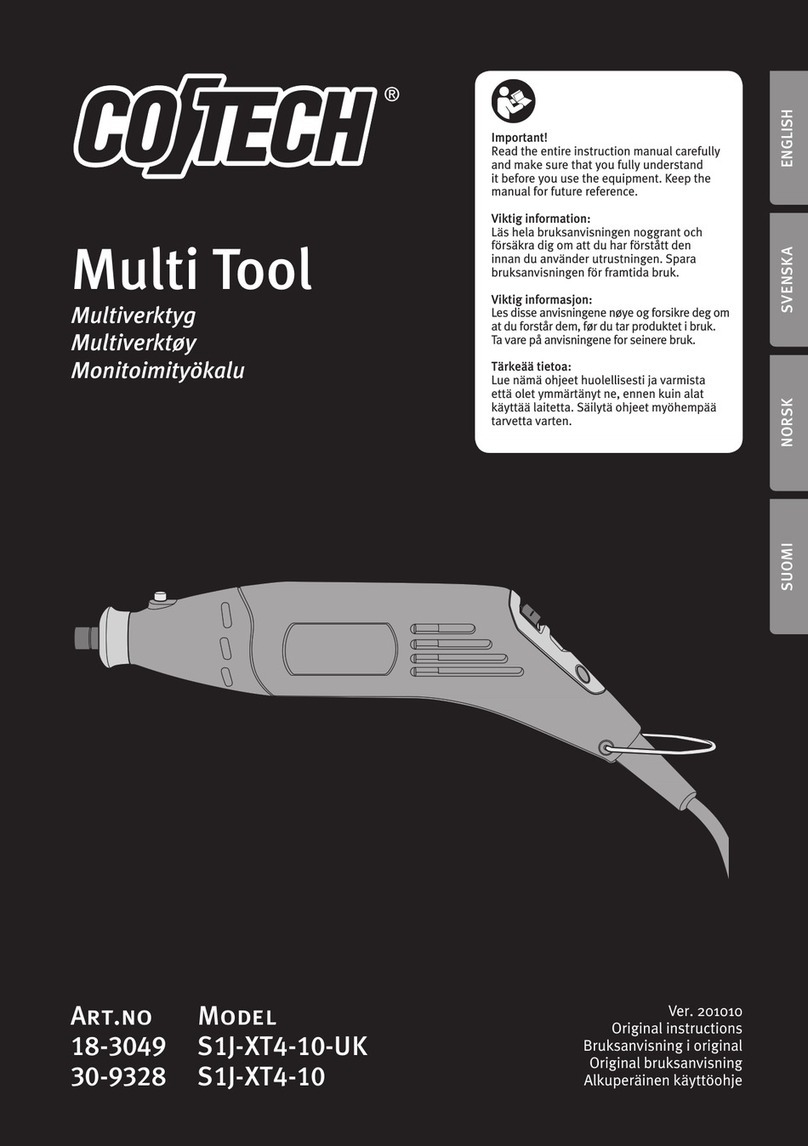
CO/Tech
CO/Tech S1J-XT4-10-UK Original instructions

Hellermann Tyton
Hellermann Tyton MK9SST Operating instruction
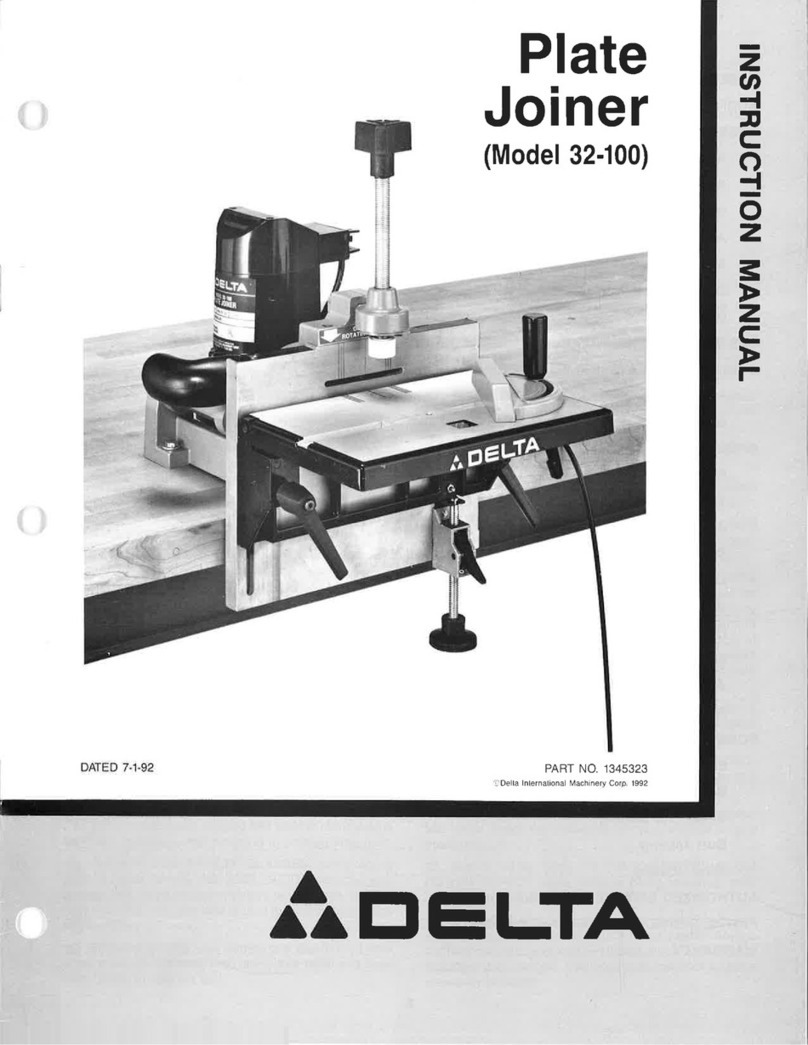
Delta
Delta 32-100 instruction manual
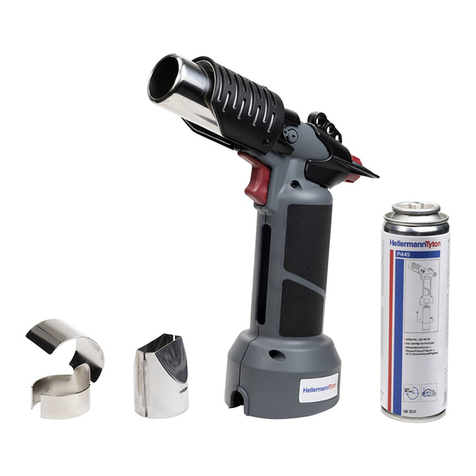
Hellermann Tyton
Hellermann Tyton CHG900 operating instructions
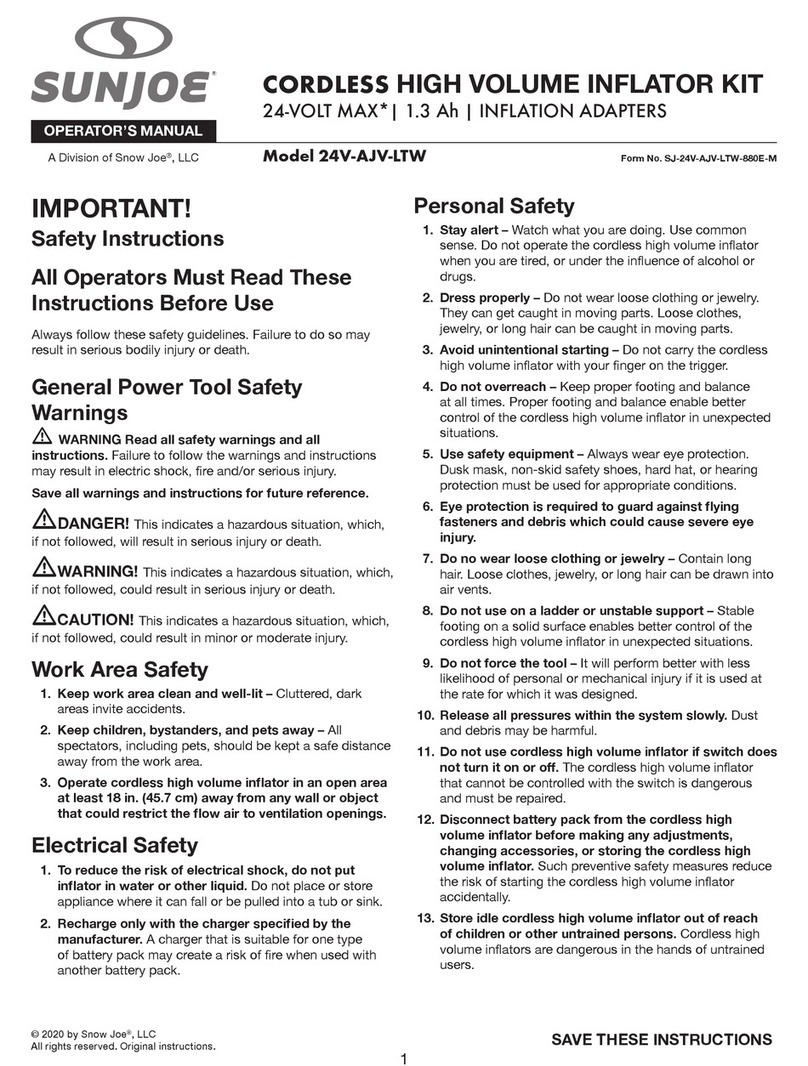
sunjoe
sunjoe 24V-AJV-LTW Operator's manual
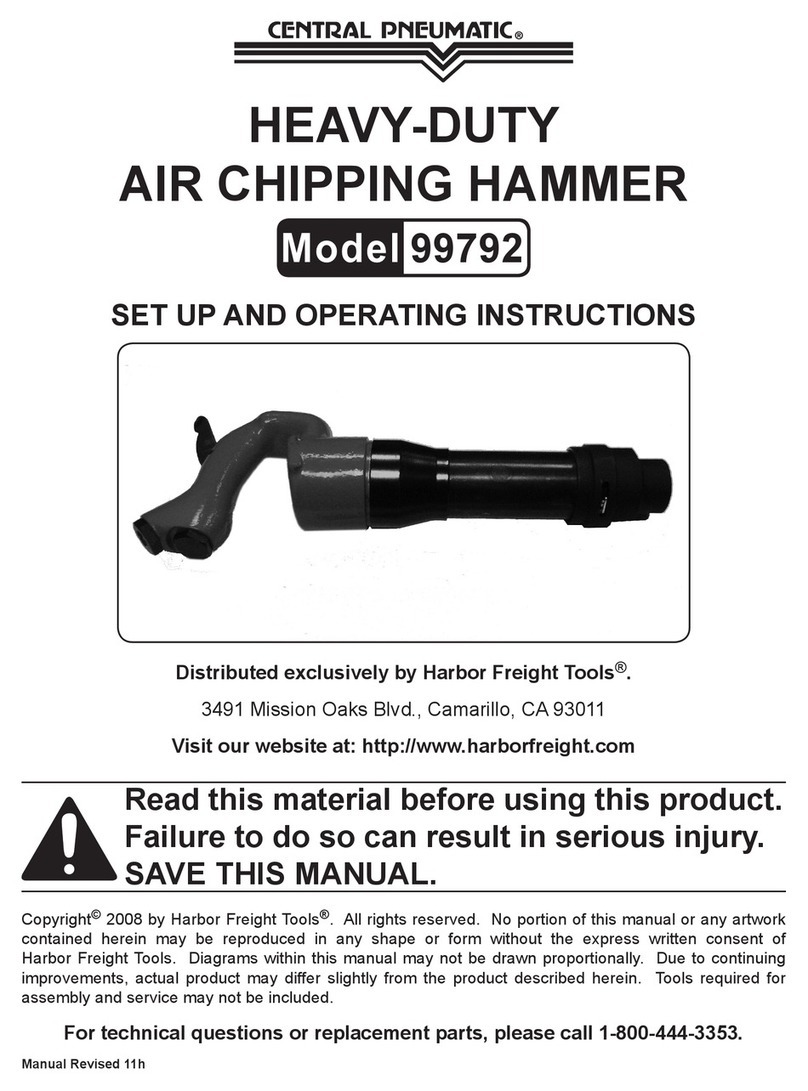
Central Pneumatic
Central Pneumatic 99792 Set up and operating instructions
